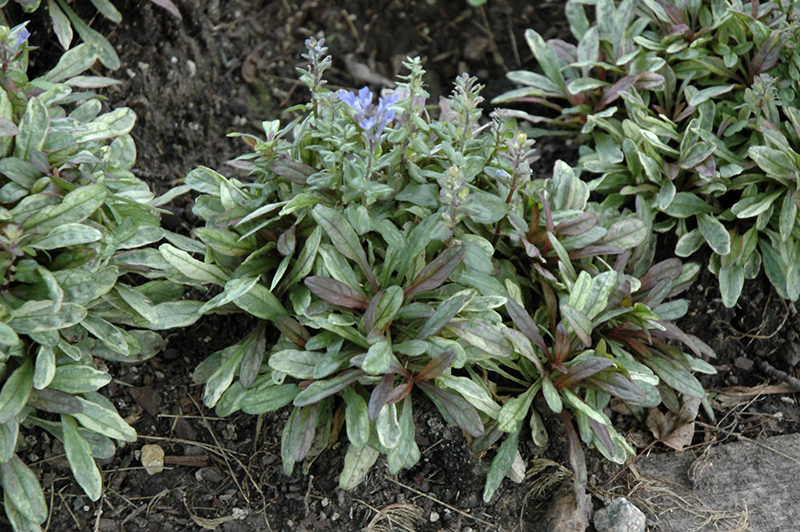Plant Height: 3 inches
Flower Height: 4 inches
Spread: 12 inches
Sunlight:
![]()
![]()
Hardiness Zone: 3
Other Names: Carpet Bugle
Description:
A striking variegated carpet bugle, green and cream colored foliage with purple undertones, will light up the floor of a garden like nothing else; vigorous, excellent for containers, as a groundcover and in borders; tolerates any soil with good drainage
Ornamental Features
Dixie Chip Bugleweed's attractive tiny narrow leaves remain dark green in color with showy creamy white variegation and tinges of purple throughout the year on a plant with a spreading habit of growth. It features subtle spikes of sky blue flowers rising above the foliage from mid to late spring.
Landscape Attributes
Dixie Chip Bugleweed is a dense herbaceous evergreen perennial with a ground-hugging habit of growth. Its relatively fine texture sets it apart from other garden plants with less refined foliage.
This plant will require occasional maintenance and upkeep, and should not require much pruning, except when necessary, such as to remove dieback. It is a good choice for attracting butterflies to your yard, but is not particularly attractive to deer who tend to leave it alone in favor of tastier treats. Gardeners should be aware of the following characteristic(s) that may warrant special consideration;
- Spreading
Dixie Chip Bugleweed is recommended for the following landscape applications;
- Rock/Alpine Gardens
- Border Edging
- General Garden Use
- Groundcover
- Naturalizing And Woodland Gardens
Planting & Growing
Dixie Chip Bugleweed will grow to be only 3 inches tall at maturity extending to 4 inches tall with the flowers, with a spread of 12 inches. Its foliage tends to remain low and dense right to the ground. It grows at a medium rate, and under ideal conditions can be expected to live for approximately 10 years. As an evegreen perennial, this plant will typically keep its form and foliage year-round.
This plant does best in partial shade to shade. It does best in average to evenly moist conditions, but will not tolerate standing water. It is not particular as to soil type or pH. It is somewhat tolerant of urban pollution. Consider covering it with a thick layer of mulch in winter to protect it in exposed locations or colder microclimates. This particular variety is an interspecific hybrid. It can be propagated by division; however, as a cultivated variety, be aware that it may be subject to certain restrictions or prohibitions on propagation.


